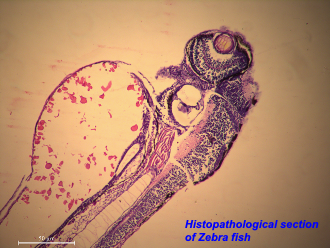
Nanotechnology is an amalgamation of material science (nanoparticles) and engineering (technology). Scientists are more focussed towards the use of this technology at the cellular and molecular level to produce major benefits to life sciences and healthcare. One of the salient examples in this regard is the widespread employment of titanium dioxide (TiO2) nanoparticles across a range of consumer goods.
But why has TiO2 generated so much interest? It is because this particular particle has a property of being resistant to UV light and therefore is being put to use in everything, from sunscreen and other cosmetics, to paints, paper, fibres and a variety of other products. It has begun to proliferate in our daily environment. However, no matter how great this breakthrough is, there is a danger involved with it too. Such technological innovations often flood the market before every aspect of their use has been thoroughly researched, and this may have adverse consequences.
In order to ensure that this does not occur with TiO2 nanoparticles, my lab at the School of Arts and Sciences’ Biological and Life-Sciences Division, has been working on a research project that extensively studies the various side-effects that could arise from the wide-scale integration of these particles into our everyday activities and environment. In the past, my lab has been involved in studying the potential effects of these particles on human cells, mice and prokaryotic bacteria. The most recent leg of the project focuses on the potential contamination and interaction of different natural organic matters with these nanoparticles in aquatic systems.
Attempting to fully estimate the impact of using this new invention is important. Given that waste is generated at every stage of the consumer-product cycle (from production to disposal), many items with TiO2 nanoparticles are likely to end up being discarded into water bodies. It is crucial to know the possible ramifications of this occurrence. The main concern with nanoparticles is that because they are so small, they have electrons circling on their boundaries which makes them considerably reactive.
One of the main difficulties associated with testing for their effects in aquatic systems is simply the extent of diversity in the latter. Aquatic systems from different parts of the world have different natural organic matter, different quantities of humic acid, clay and so on. Consequently, any experiments conducted in a particular sample will be applicable only to local water-bodies, and hence, the results will not be generalised. On the other hand, we have ensured that the organisms that were chosen as test subjects (Tetrahymena pyriformis, Paramecium caudatum and embryos of Zebrafish) were widely accepted as model-species for such tests. Thus, this study makes a significant contribution to understand the possible negative effects of novel technological solutions and the ways we can work to mitigate them. We hope that our upcoming publications in these experiments, and further milestones within this project, continue to bring us further insight on these important issues.
Apart from this research, I teach courses on Molecular Biology, and Recombinant DNA Technology in the Integrated Master of Science in Life Sciences at Ahmedabad University. One of the major objectives of the molecular biology course is to understand the roles of genes and their activities at the molecular level. However, the recombinant DNA technology course allows the creative use of modern tools and techniques for manipulation and analysis of genomic sequences. The knowledge gained from these courses can be applied to a range of disciplines in biology, from genetics, disease biology, biomedicine, agriculture and fisheries.
Figure: - Model organisms used in the lab to understand the impact of nanotechnology in environment


